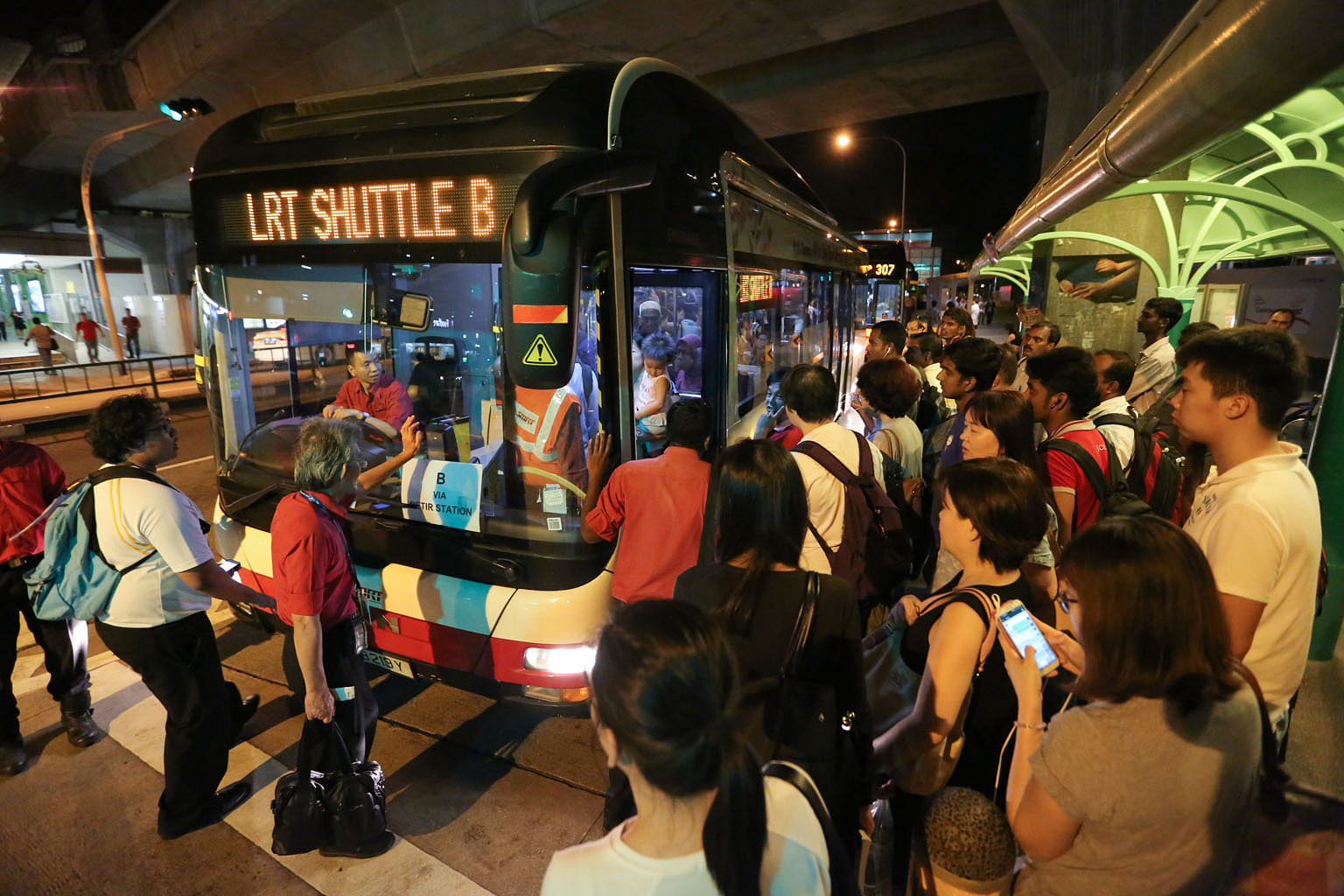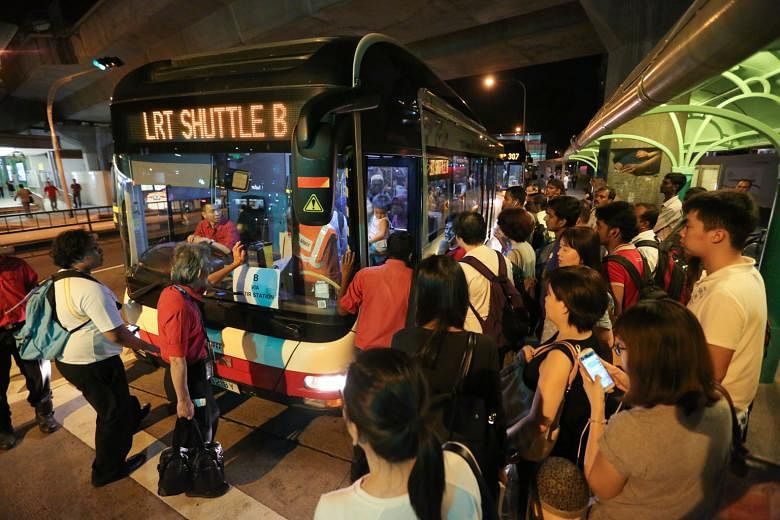Plans to rejuvenate the North-South and East-West MRT lines - which involve resleepering, resignalling, train upgrades, additional trains and third-rail replacement - will come to nought if the power system is not upgraded first.
Such efforts will only tax the already overburdened and seemingly frail power network, and lead to more major breakdowns.
Recent events have told us as much. Since operators started ramping up train services in 2011 to cope with soaring demand, power-related faults have climbed.
According to Land Transport Authority (LTA) statistics, rail disruptions caused by power and trackside faults more than doubled between 2011 and 2014.
Now that additional trains are gradually being injected into the system, more warning signs have surfaced. The first was the Bukit Panjang LRT fire in March last year which led to a 24-hour shutdown.
This was followed soon by the July 7 incident last year which crippled both the North-South and East-West lines - a disruption of unprecedented scale that affected nearly half a million commuters.
The third red flag was raised last month, when a power trip at an intake station brought down the western segment of four lines.
So far, there has been no satisfactory explanation for any of the three incidents. Operator SMRT and its regulator, LTA , have merely issued statements of fact.

In the Bukit Panjang LRT incident, for instance, we still do not know why a new circuit breaker caught fire. One of the primary functions of a circuit breaker is to trip and cut off electricity flow in a glitch so as to prevent fires.
For the July 7 incident, investigators pointed to a salt-caked insulator, but could not replicate the fault to back up their hypothesis.
As for the most recent incident, there is still no explanation as yet on why a power trip occurred at an intake station on April 25, why the power supply could not be switched to an alternative station, and why the trip could be allowed to affect multiple lines.
This does not breed confidence.
What's more, we are told that to remedy the faults, the load tolerance of various components has been raised.
Sure, this may be the speediest fix for the moment, but we still need to get to the root causes and come up with a more holistic remedy - otherwise, we will one day compromise safety. After all, power trips occur for one reason only - to protect.
They protect more vital systems in the network from damage and, more importantly, they protect rail workers and commuters from electric shocks.
They also prevent electrical fires, of which there have been at least four in our rail system in the last decade or so.
How many more do we need before we take these warnings seriously?
Right now, we are focusing on resleepering, resignalling, and replacing the third rail.
We are also adding a lot more trains to the network. Together with the North-East Line and Circle Line, 99 more trains will be added to the network by 2019, expanding the combined fleet by almost 50 per cent.
If we are already experiencing power faults of such magnitudes as the last two, what would happen when the electrical load is raised by 50 per cent?
More than half of the major breakdowns in recent months were power-related. Just days before the April 25 four-line breakdown, a panel of power experts submitted a report outlining no fewer than 40 recommendations - many of which it categorised as urgent.
Indeed, the LTA and SMRT should get the power system back in shape before all else, and soon. Otherwise, we will end up putting the cart before the horse.


